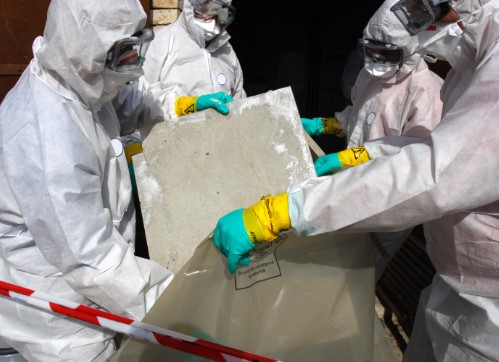When it comes to public safety in Manhattan Beach, did you know that 94% of residential and commercial buildings constructed before 1980 are likely to contain asbestos-containing materials?
As the awareness of asbestos risks continues to grow, the evolution of asbestos testing methods in Manhattan Beach has become a pivotal focus for ensuring the safety of residents and workers.
Stay tuned to discover the crucial developments and future trends shaping the landscape of asbestos testing in this coastal community.
Historical Background of Asbestos Testing
During the early 20th century, the historical background of asbestos testing in Manhattan Beach saw a gradual emergence as a response to growing concerns regarding the health risks associated with asbestos exposure.
The historical significance of asbestos testing lies in its evolution of regulations aimed at safeguarding public health. Initially, minimal regulations existed, with asbestos widely used in construction due to its fire-resistant properties.
However, as the detrimental health effects of asbestos became more apparent, regulatory bodies began implementing stricter measures to protect individuals. This shift led to the establishment of standardized testing procedures to detect asbestos presence in buildings, ensuring the safety of occupants.
The evolution of regulations concerning asbestos testing marked a pivotal moment in public safety practices, highlighting the importance of proactive measures in mitigating health risks. By understanding the historical context of asbestos testing in Manhattan Beach, one can appreciate the progression towards safer environments and the continuous efforts to uphold public health standards.
Regulatory Changes Impacting Testing Procedures
Significant regulatory changes have impacted the testing procedures for asbestos in Manhattan Beach, shaping the approach towards ensuring safety and compliance with health standards. These changes have necessitated a stringent focus on regulatory compliance to safeguard public health. Asbestos testing protocols have been refined to align with updated regulations, emphasizing the importance of thorough and accurate testing methodologies.
Regulatory compliance now requires adherence to specific testing protocols that ensure the proper identification and quantification of asbestos fibers in various materials. This includes stringent sample collection methods, precise analytical techniques, and detailed reporting standards. Testing procedures must be conducted by certified professionals following industry best practices to guarantee accurate results and compliance with regulatory requirements.
Moreover, these regulatory changes have led to enhanced quality control measures within asbestos testing procedures. Stringent oversight and documentation are now fundamental aspects of testing protocols to maintain the highest standards of accuracy and reliability. By integrating these regulatory updates into testing procedures, Manhattan Beach can effectively mitigate asbestos-related health risks and uphold public safety standards.
Technological Advances in Asbestos Detection
The evolution of asbestos testing procedures in Manhattan Beach has prompted a heightened focus on technological advances in asbestos detection methods to enhance precision and efficiency in identifying asbestos fibers. Detection accuracy is crucial in ensuring the safety of residents and workers in buildings where asbestos may be present.
Advanced technologies such as Transmission Electron Microscopy (TEM) and Polarized Light Microscopy (PLM) are now being utilized to achieve higher levels of accuracy in detecting and quantifying asbestos fibers in environmental samples. These methods allow for the identification of asbestos types and the determination of fiber concentrations, providing crucial information for decision-making regarding asbestos management strategies.
Additionally, the use of automated systems and artificial intelligence algorithms is streamlining the analysis process, leading to rapid results without compromising accuracy. By leveraging these technological advancements, asbestos testing procedures in Manhattan Beach are becoming more reliable and efficient, ultimately contributing to better public safety outcomes.
Importance of Routine Asbestos Inspections
Conducting regular asbestos inspections is a critical practice for maintaining a safe and compliant environment in Manhattan Beach. Routine maintenance inspections help identify any potential asbestos-containing materials (ACMs) in buildings. By detecting ACMs early, property owners can take necessary steps to address the issue promptly, reducing the risk of exposure to harmful asbestos fibers. These inspections involve thorough assessments of buildings, sampling of materials suspected to contain asbestos, and testing in accredited laboratories to confirm the presence of asbestos.
Failing to conduct routine asbestos inspections can lead to health risks for occupants and workers in Manhattan Beach. Asbestos exposure is linked to serious health conditions such as lung cancer, mesothelioma, and asbestosis. Regular inspections not only mitigate these health risks but also ensure compliance with regulations governing asbestos management. Property owners must prioritize routine asbestos inspections as part of their overall maintenance plan to safeguard the well-being of individuals and maintain a safe environment in Manhattan Beach.
Future Trends in Asbestos Testing
What advancements are shaping the future of asbestos testing methodologies in Manhattan Beach? As the industry standards for asbestos testing continue to evolve, emerging technologies play a crucial role in enhancing the accuracy and efficiency of testing procedures.
One key trend that’s becoming more prevalent is the use of advanced spectroscopy techniques, such as Fourier-transform infrared spectroscopy (FTIR) and X-ray fluorescence (XRF) analysis. These technologies allow for rapid, on-site identification of asbestos-containing materials, reducing the time and cost associated with traditional laboratory testing.
Moreover, the integration of artificial intelligence (AI) algorithms in asbestos testing is revolutionizing the way samples are analyzed and results are interpreted. AI can help identify asbestos fibers with greater precision, minimizing the risk of human error and improving overall testing reliability.
In the future, we can expect to see continued advancements in portable testing devices, remote sensing technologies, and data analytics tools to further streamline asbestos testing processes and ensure compliance with stringent industry regulations. By staying at the forefront of these emerging trends, asbestos testing professionals in Manhattan Beach can better protect public safety and effectively manage asbestos-related risks.

